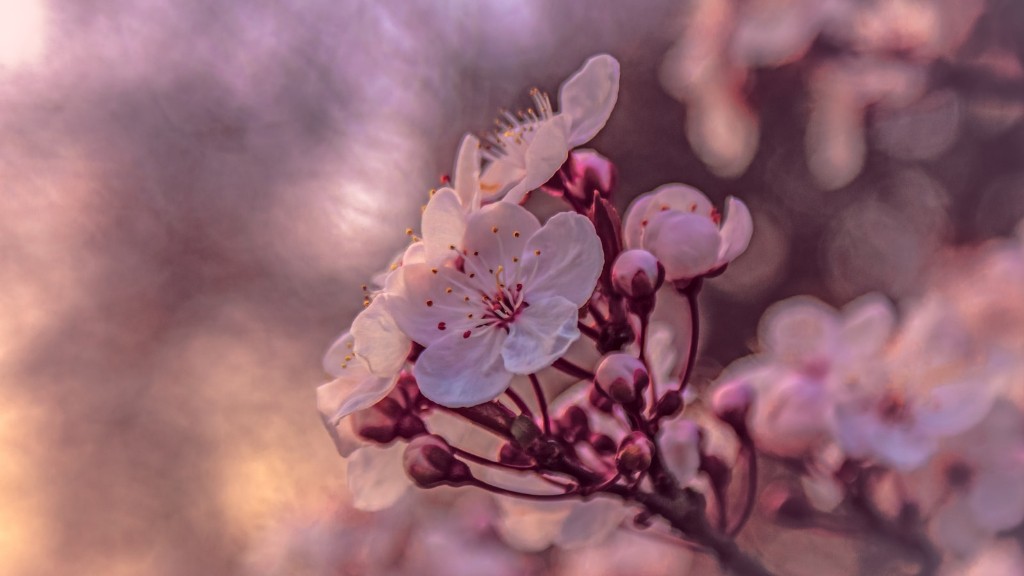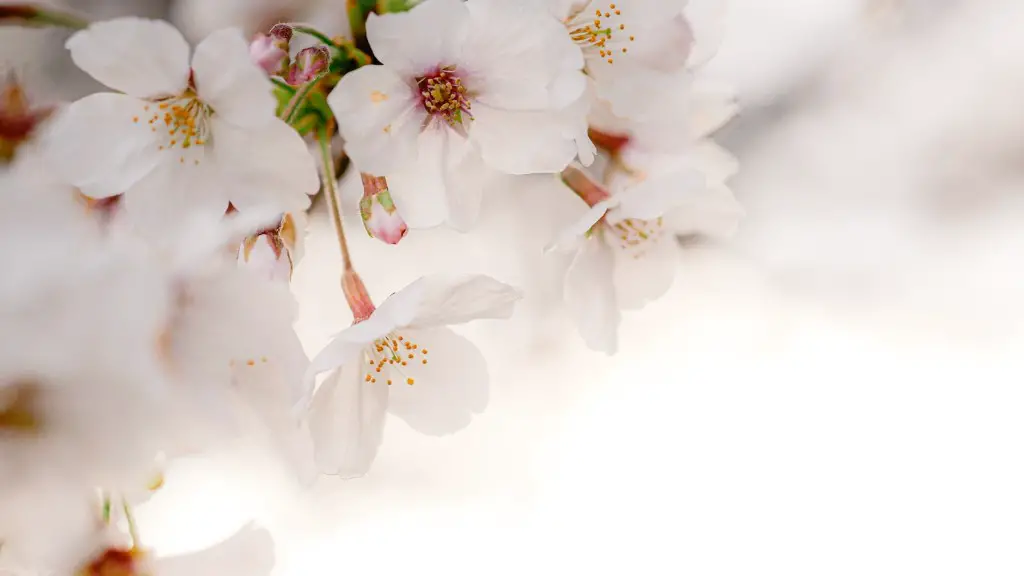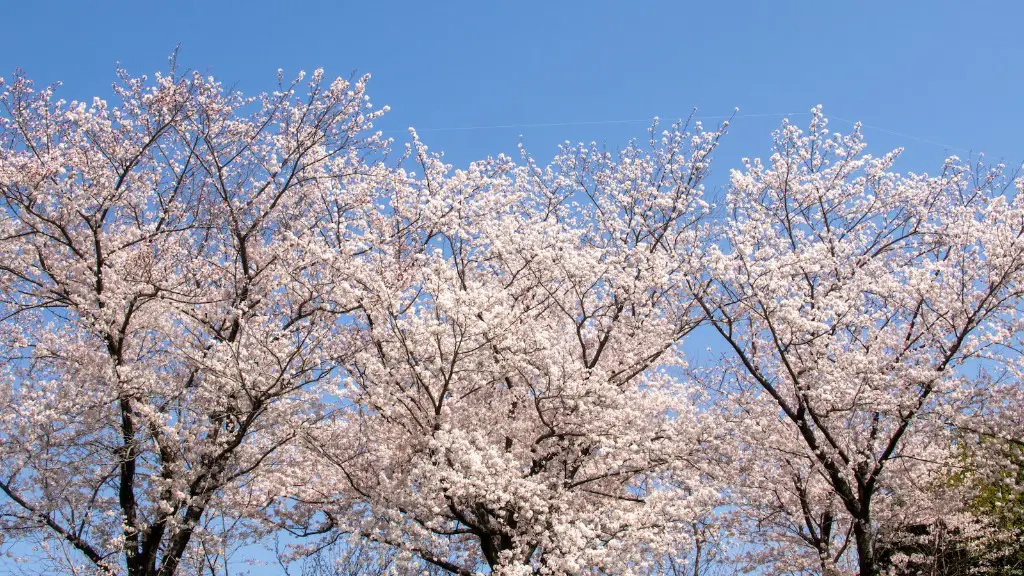Background Information
Yoshino cherry trees, also known as Prunus x yedoensis, are a type of flowering cherry tree that is native to Japan. They are popularly grown in home gardens and urban landscapes due to their showy white blossoms and attractive red-orange foliage. They have stunning visual appeal, but unfortunately, they can be susceptible to various diseases and pests.
Common issues that can cause a yoshino cherry tree to die include soil drainage problems, proper sunlight, certain insect pests and fungal diseases. If your yoshino cherry tree is exhibiting signs of distress, it is important to take the necessary steps to determine the cause of the problem and address it in a timely manner.
Soil Drainage
Yoshino cherry trees require well-drained soil, so if your tree is planted in an area with poor soil drainage, it may cause the tree to become waterlogged. Waterlogging can be due to a combination of factors, but it can reduce the tree’s ability to absorb essential nutrients and oxygen from the soil, which can lead to stunted growth and deprive the root system of the water and nutrients it needs to stay healthy.
If your tree is showing signs of distress due to poor soil drainage, it is important to improve the drainage in the area to ensure the tree’s roots are able to adequately absorb nutrients and oxygen. Once the soil drainage has been improved, you can also add a layer of mulch or compost to the soil to help retain moisture while keeping the roots from becoming waterlogged.
Proper Sunlight
Yoshino cherry trees require full sun for at least six hours a day, so if your tree is not receiving enough sunlight it can cause it to become stressed and eventually die. If this is the case, it may be necessary to move the tree to a sunnier location. If that is not possible, it is important to prune the surrounding trees and shrubs to allow more sunlight to reach the tree.
An important note: if your tree is receiving too much sunlight, it can also become distressed due to the intense heat. If possible, it is important to provide the tree with some shade to protect it from the scorching sun.
Insect Pests and Fungal Diseases
Yoshino cherry trees can be susceptible to a variety of insect pests and fungal diseases if they are not properly cared for. Common pests and diseases include aphids, spider mites, leaf spot and powdery mildew. These pests and diseases can reduce the tree’s growth rate, cause the foliage to become distorted, reduce flower production and even kill the tree.
If your tree is showing signs of distress due to pests or disease, it is important to identify the pest or disease and treat it with the appropriate pesticide or fungicide. It is also important to prune any dead or diseased limbs and remove any fallen leaves from the area to reduce the risk of the disease spreading.
Proper Fertilization
In order for your yoshino cherry tree to grow and thrive, it is important to provide it with the proper nutrition. Fertilizing the tree twice a year – once in the early spring and once in the late summer – is a good way to ensure that it has the nutrients it needs to stay healthy. It is also important to avoid over fertilizing the tree, as this can lead to nutrient burn, which can cause the tree to become distressed and eventually die.
Cultural Practices
In addition to providing the tree with the proper nutrition and sunlight, it is also important to practice good cultural techniques in order to keep your yoshino cherry tree healthy. This includes regularly pruning the tree, removing dead or diseased limbs, avoiding wounding the tree and not planting it too deep in the soil.
If the tree is planted too deep, the roots may be deprived of sufficient oxygen, which can lead to root rot and eventually death. It is also important to avoid overwatering the tree, as this can lead to waterlogging and root rot.
Watch for Signs of Distress
It is important to keep an eye out for signs of distress in your yoshino cherry tree, as this can be an early warning sign of an underlying issue. Common signs of distress include leaf discoloration, wilting of leaves, slow growth, and a lack of flower production. If you notice any of these signs, it is important to take the necessary steps to address the issue as soon as possible.
Monitor Soil Conditions
It is also important to monitor soil conditions in order to ensure that the tree is getting enough nutrients and oxygen. You can use a soil pH test to determine the acidity or alkalinity of the soil, as yoshino cherry trees prefer slightly acidic soil. You can also check the moisture content of the soil in order to ensure that it is not too dry or waterlogged, as these can both lead to distress in the tree in extreme cases.
Regular Tree Maintenance
Regular tree maintenance is also essential for keeping your yoshino cherry tree healthy. This includes regularly pruning the tree, removing dead and diseased limbs, and keeping the area around the tree clear of any debris that can attract pests and diseases. In addition, it is important to regularly inspect the tree for any signs of distress that may indicate an underlying issue.
Conclusion
Although yoshino cherry trees can be susceptible to various diseases and pests, they can still be effectively cared for and maintained. In order to ensure your yoshino cherry tree is healthy and thriving, it is important to provide it with proper nutrition, adequate sunlight, and the necessary cultural care. Monitoring the soil conditions and keeping an eye out for any signs of distress can also help to keep the tree healthy and prevent it from dying.


